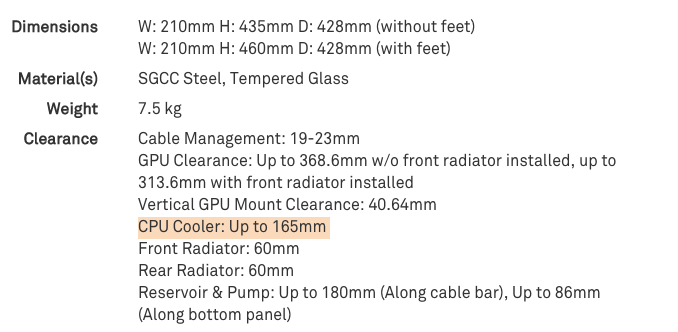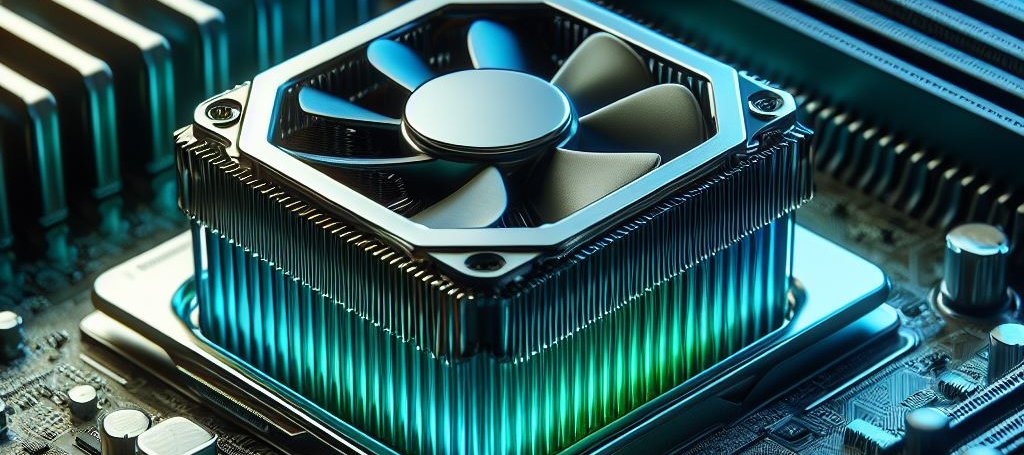A beginner guide to CPU air cooling
Posted on October 27, 2019 • 3 minutes • 482 words
I was researching about CPU air coolers for the best CPU air cooler and I learnt a lot of stuff. Thought this might be useful to some of you. Most of the stuff below are copy and pasted from various sources. This serves as a basic guide for absolute beginners like me when it comes to CPU air cooling.
TL;DR: Noctua NH-D15 is the best air CPU cooler out there.
Reading fan specs
CFM, m³/h, RPM, dB/A and mm H20
Every fan features a cubic feet per minute (CFM) rating, which measures of the volume of air it moves in a minute. The greater the CFM, the more air a fan moves. To properly air cool your computer, you need have enough case fans to push or pull air into and out of the case. More case fans means higher total CFM and more air being moved through your computer.
Some manufacturers use m³/h as unit. One m³/h is ~0.589 CFM and one CFM is ~1.699 m³/h. You can use website like ConvertUnits.com
to convert them.
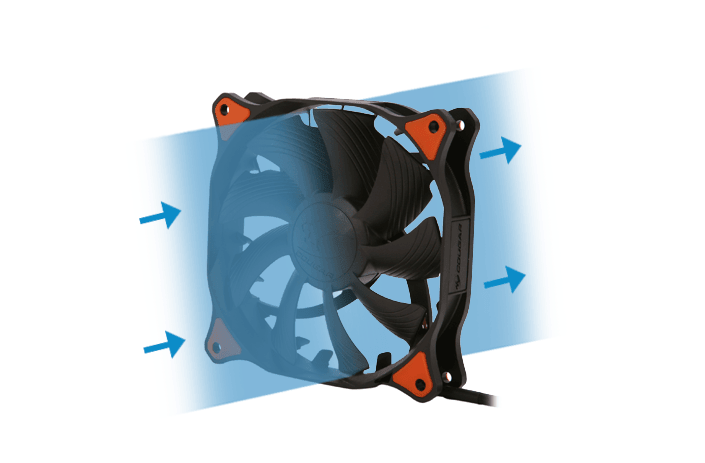
The airflow is always moving from the front to the back of the fan
Other specs like RPM (rounds per minute) and dB/A which is the noise level are kind of self-explained. Higher RPM is cooler but also noisier. Lower dB/A is better.
You may also notice mm H2O which stands for millimeters of water - which is measurement of “static pressure” - the amount of negative pressure it takes to makee a fan come to a complete stop at xxx RPM. As you can see, it’s highly dependent on RPM speed.
Fan connector pins
A three pin connector is basically power (5/12 volt), ground, and signal. The signal wire measures how fast the fan is moving without any controls for the fan’s speed. With this type, fan speed is typically controlled by increasing or decreasing the voltage over the power wire.
A four pin connector is a little different than the three pin connector since it has the extra (fourth) wire used for controlling and sending signals to the fan, which likely has a chip on it that tells it to slow down or speed up (in addition to the other wires the three pin connector has). You probably don’t need to know more than that.
Positive / Neutral / Negative air pressure
Or you can just take a look at thousand words below:
Positive pressure looks like this
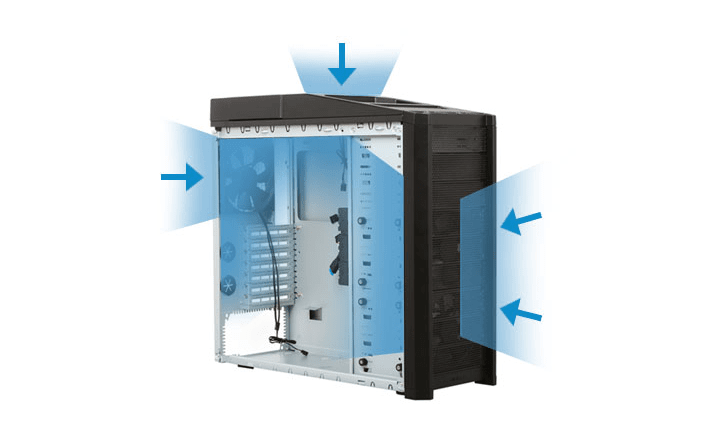
Neutral pressure looks like this
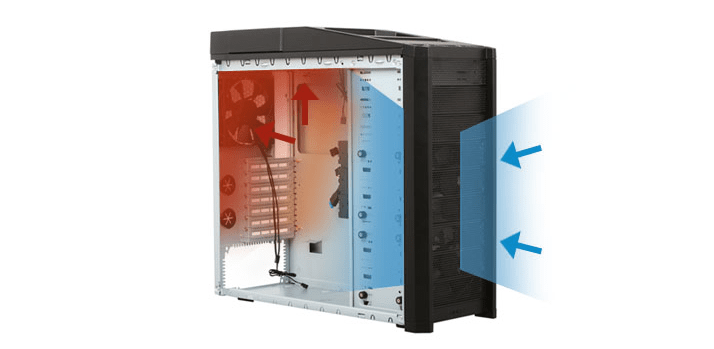
Negative pressure looks like this
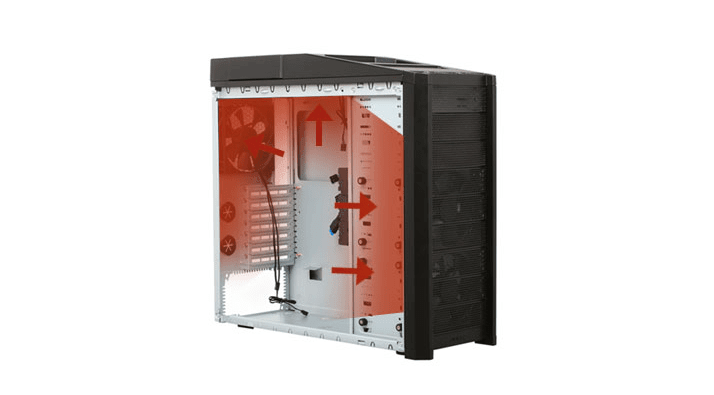
Selecting a CPU air cooler
Once you found an air cooler that you like, make sure it can be fit inside your case. Read your case specs and find CPU cooler clearance.
To be sure, you can also go to site like PCPartPicker and find complete builds features the case and cooler you intend to use.
